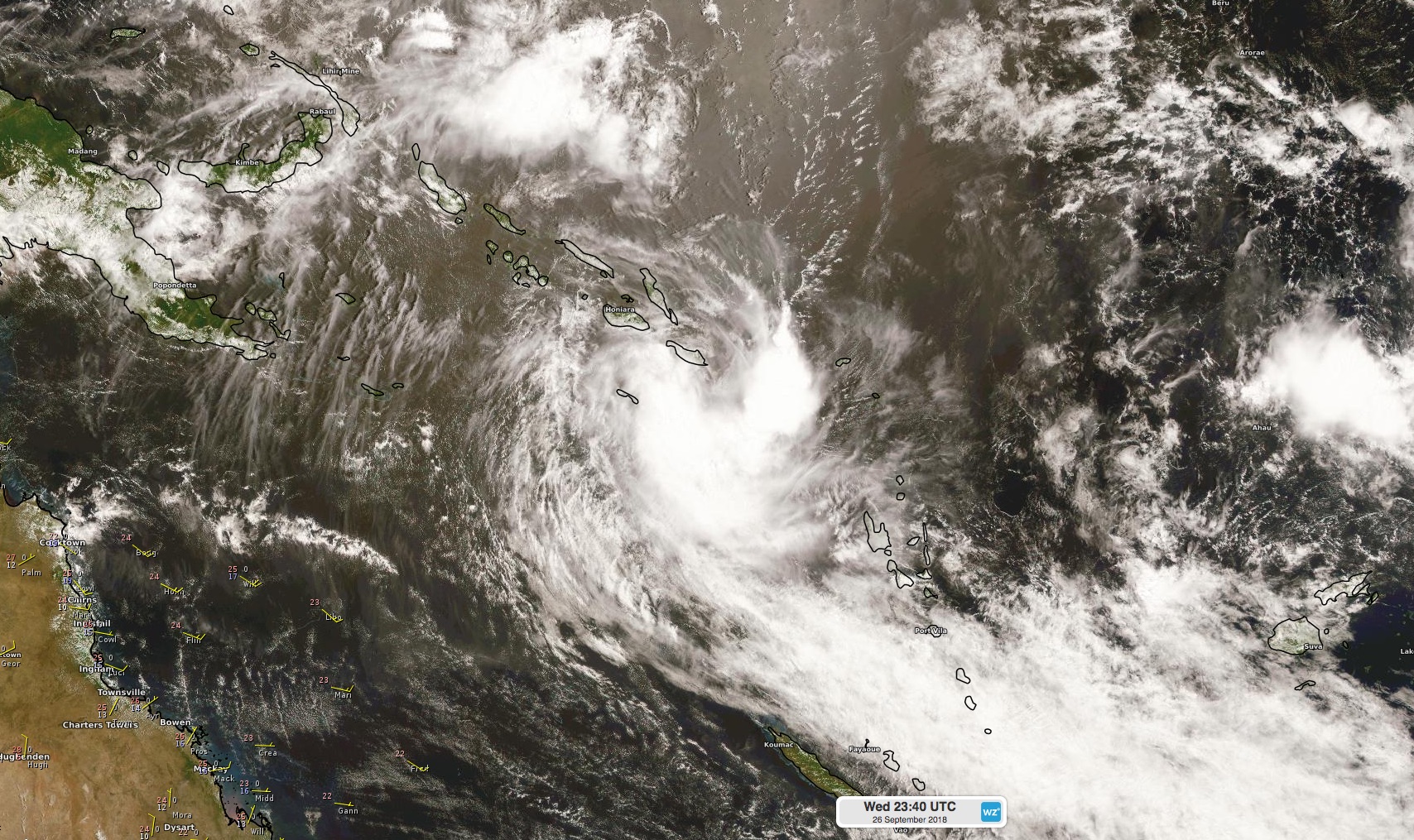Season's first southern hemisphere tropical cyclone

The southern hemisphere's first tropical cyclone of the season has formed near the Solomon Islands and may enter Australian waters before dissipating this week.
Tropical Cyclone Liua was named by the Fiji Meteorological Service on Thursday morning as it formed over the Solomon Islands' Makira-Ulawa Province.

Image: Himawari-8 visible true colour image of Tropical Cyclone Liua on Thursday morning, local time.
The Solomon Islands Meteorological Service issued a tropical cyclone warning on Thursday morning, alerting for the risk of gale force winds, rough seas and heavy rain in central and southern parts of the country.
Cyclone Liua is expected to move south during the next 24 hours before turning towards the west from Friday. This track may allow the system to enter the far east of Australia's tropical cyclone area of responsibility before it weakens below tropical cyclone strength.
Cyclone Liua is unlikely to reach Australia's coast and is expected to weaken as it moves over the Coral Sea from Saturday into next week.
Liua would be only the second named tropical cyclone to be active in the Australian region this early in the season since 2004. In 2015, Tropical Cyclone Raquel became the first tropical cyclone on record in the South Pacific Ocean during the month of July. Back in 2004, Tropical Cyclone Phoebe existed briefly near the Cocos Islands at the beginning of September.
Australia's tropical cyclone season runs from November to April, with the most active period typically occurring between December and March.
The first tropical cyclone to develop in Australia's areas of responsibility during the 2018/19 season will be named Owen.